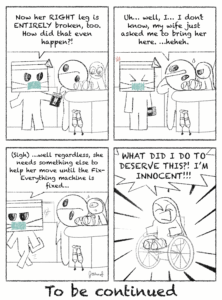By now, it’s no secret that there is palpable animosity between the NFL’s players and its commissioner, Roger Goodell. Whether it’s James Harrison calling Goodell a “crook,” or Michael Bennett calling him an “asshole,” clearly there is an “Us vs. Them” mentality in America’s most popular sport. To the outside eye, it’s apparent that there are two key issues driving this tension: player safety and player discipline.
Goodell, who is technically an employee of the 32 NFL Franchise owners, has received widespread negative attention throughout his tenure. This animosity stems from the 2011 Collective Bargaining Agreement between the NFL and its players, which lasts until 2021.
As with every professional sports league, this agreement creates clear and concise language that governs the relationships between players, personnel, owners, and the league office.
While the players and the NFL Players Association (NFLPA) were elated to finally get their fair share of league revenues (a 50-50 split), there was massive oversight on their part in this agreement. The accord allowed Roger Goodell to be the judge, jury, and executioner when it came to player conduct and discipline. Whether on or off the field, Goodell’s influence was widespread and widely viewed as overbearing.
An example of this was 2014 Deflategate Saga in which Goodell levied a four- game suspension on Tom Brady for allegedly using underinflated footballs in rainy weather to gain a competitive advantage. On top of Brady’s suspension, the team was issued a $1 million fine and lost a first-round draft pick. Conversely, Ray Rice, who was caught on tape punching his then-fiancée, now-wife Janae to the ground, rendering her unconscious, was suspended for just two games.
Does it seem at all rational that Brady was suspended twice as long as Ray Rice? Not at all. Swiftly, Goodell implemented a harsher set of penalties when it came to domestic violence misconduct, which starts the player suspension at six games after the first offense. This might be the first good decision Goodell has made when it comes to player discipline in his 10-year tenure.
These types of decisions caused the league significant ire in the loss of sponsorships and negative media coverage. On the topic of bad optics for the league, player safety is a polarizing topic the NFL can’t seem to shake.
Back in 2013, retired players were awarded a sum of $765 million in injury settlement. After contentious mediation, it came out that the NFL concealed information regarding the severity of head injuries, often rushing players back to the field. On the same topic, current research has shown a convincing correlation between head-to-head hits and the occurrence of Chronic Traumatic Encephalopathy (CTE), a sobering brain disease.
Hundreds of former players battle addiction, depression, and debilitating injuries. Over 30 percent of former players were listed as plaintiffs on the initial lawsuit. The NFL currently does not cover medical costs to former players.
With the recent announcement of an additional $100 million donation to the research of head injuries and brain disease, it is hard not to view this as a PR stunt from Goodell. He claims that this is going to be an “immediate game changer” to player safety, but if you were to ask an NFL player, current or former, they would be skeptical that any change is coming in the near future.
It’s not hard to see why Harrison and Bennett have the opinions they do. It is imperative for Goodell in the future to achieve a balance between honoring the wishes of team ownership while working with the NFLPA to ensure substantial concussion legislation and protocol.

